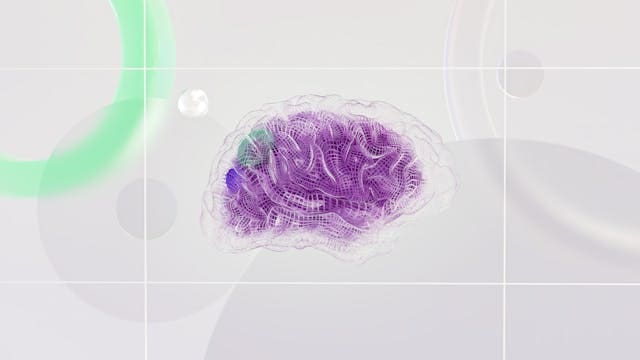The Paradox of Human Behavior
We live in an age of contradictions. Technology connects us across continents, yet loneliness and division deepen. We’re told to “be kind”, yet scroll endlessly through and encourage online vitriol. From social media feuds to political polarization to outright war, a single question pulses beneath the noise: how can humans capable of astonishing love and empathy also be so mean and destructive?
Australian biologist Jeremy Griffith believes he has uncovered the answer – and it isn’t a minor adjustment to psychology textbooks. He presents a sweeping framework that challenges long-held assumptions about human behavior and, by extension, our future. An early draft of his landmark book, FREEDOM: The End of the Human Condition, so impressed Professor Harry Prosen, a former president of the Canadian Psychiatric Association, that he wrote its foreword.
But more on that later. Griffith’s path to his theory didn’t start in libraries or lecture halls. It began in the raw landscapes of Australia’s wilderness – and it’s a story that shaped everything to come.
From the Bush to Biology: Griffith’s Unconventional Path
Raised in the Australian countryside, Griffith developed a deep love of nature early on. Offered the chance to pursue postgraduate study at Stanford on a football scholarship, he chose a different course: a seven-year search through the rugged wilds of his country’s island state, Tasmania, for the elusive Thylacine (the ‘Tasmanian Tiger’), long feared extinct. His investigation – regarded as the most thorough field study of the animal ever undertaken – sadly confirmed those fears.
For Griffith, the demise of the ‘Tiger’ was more than a scientific conclusion. It underscored human brutality and exposed a troubling paradox: how could the same species capable of cherishing nature also drive another species to extinction? That contradiction redirected his focus from the external world of field biology to the internal world of human psychology. From then on, his mission was to probe the deeper causes of our conflicted nature.
‘Instinct vs Intellect’: The Origin of the Human Struggle
Griffith’s theory traces back some two million years, to the dawn of human consciousness. Before this evolutionary leap, he says, our ancestors lived by instinct. But with the emergence of consciousness came not only intellectual curiosity and experimentation, but a profound rupture – a conflict between instinct and inquiry that would shape the trajectory of human psychology.
Griffith argues that our instincts, designed to guide behavior, could not comprehend the conscious mind’s experiments in behavior. They condemned deviation, triggering an insecure and then defensive backlash: and so developed the anger, egocentricity, and alienation that permeate and shape modern life. But these traits, he says, aren’t signs of inherent ‘evil’ – they’re psychological shields against that unconscious guilt and self-condemnation.
To illustrate, Griffith invites readers to imagine a migratory bird suddenly aware of itself. It veers off its ancient path, and instinct screams “wrong.” The conscious mind rebels, and a cycle of internal ‘upset’ begins. Humanity, he argues, has been caught in that loop ever since.
The Macro View: A Planet at Stake
This isn’t just an abstract anthropology lesson. In Griffith’s telling, our wars, inequality, addictions, anxieties, and so on, aren’t separate crises but collective symptoms of a species suffering from a deep internal contradiction. If true, that would mean the solutions to our biggest crises – from international conflict to ecological collapse – depend less on new laws or technologies than on understanding and healing a universal psychological rift.
The World Transformation Movement sees its role as broadcasting this possibility. Set up by Griffith in 1983 as a non-profit to share his publications freely, it is now supported by eminent scientists, some 80 volunteer-run centers worldwide, and a vibrant social media presence.
From Survival Mode to Self-Understanding
At the core of Griffith’s work is a simple but radical promise: once people grasp the true cause of our inner turmoil, guilt dissolves. Freed from guilt, defensive anger and alienation lose their grip, opening space for trust, empathy, and cooperation. This, he argues, is not about suppressing human behavior but about disarming the shame that drives it.
Such a shift could ripple far beyond psychology, influencing economics, education, diplomacy, and even global approaches to climate change and conflict.
Hope in an Age of Disruption
In a time of spiraling mental-health crises, rising authoritarian policies, and planetary stress, Griffith’s theory offers a counter-narrative. Instead of seeing humanity as doomed, it frames our turbulence as transitional – an evolutionary storm before the calm.
Whether the mainstream embraces Griffith’s and the World Transformation Movement’s claims or not, the movement is reframing the conversation at a global scale: what if our “worst” traits are not our destiny but our growing pains? And what would governments, institutions, and everyday people do differently if that were true?
Why It Matters
The World Transformation Movement’s mission intersects with some of today’s most pressing debates – how to rehabilitate rather than punish, how to prevent conflict rather than react to it, how to craft climate policy that isn’t driven by guilt and imposition, but by understanding and a new cooperative mindset. In this sense, Griffith’s work isn’t just another theory about “what makes people tick.” It’s a direct challenge to how we build the future – and whether we believe humans can honestly overcome their past.
The New Jersey Digest is a new jersey magazine that has chronicled daily life in the Garden State for over 10 years.
- Staffhttps://thedigestonline.com/author/thedigeststaff/
- Staffhttps://thedigestonline.com/author/thedigeststaff/
- Staffhttps://thedigestonline.com/author/thedigeststaff/
- Staffhttps://thedigestonline.com/author/thedigeststaff/


